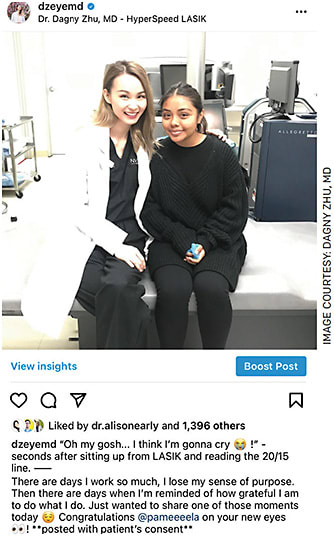... And how to avoid them
Social media can be a wonderful tool for educating patients and promoting a medical practice; however, what you share online can quickly backfire if you’re not careful. For the modern-day physician, social media is like the Wild West, and it can be easy to get into trouble if you do not follow generally accepted best practices.
Here is some advice on how to best avoid the most common mistakes doctors make on social media.
1. REVIEW YOUR INSTITUTION’S SOCIAL MEDIA POLICY
Most large organizations and academic centers now have social media guidelines for their employees, trainees and/or students to follow. Some of these include requiring you to add a disclaimer in your profile indicating that the views expressed are your own, requesting that you keep your place of employment anonymous or forbidding you from sharing any photos or videos taken within their facility.
Whatever the rules, make sure you follow it to a T, as trainees have been expelled and health-care workers have been fired for non-adherence.

Prior to posting this photo on Instagram, the patient signed a HIPAAcompliant media consent and release form, and I included a “posted with patient consent” disclaimer.
2. OBEY HIPAA AND PATIENT PRIVACY
Social media has become the modern-day exam room, but the rules of HIPAA do not stop at the exam door. Physicians must never share any personal identifying details about a patient and/or their case. Even sharing a de-identified story about a rare condition combined with the time and/or location a patient was seen may be enough information for them to identify themselves and constitute a HIPAA violation.
While sharing patient stories and transformations can be powerful, it is imperative that you ask the patient to sign a HIPAA-compliant media consent and release form. I also like to include a disclaimer that reads: “Posted with patient consent” for any post that features my patients.
3. SHARE EDUCATION, NOT MEDICAL ADVICE
Educating about a general eye condition to the public is very different from giving specific medical advice to an individual. I often receive online messages from people asking me to give my medical opinion about their various eye conditions. While it can be tempting to give a diagnosis and treatment recommendation online, it is a huge liability risk to you as the physician because you do not have sufficient information to make an informed recommendation.
The best course of action is to reply that you are unable to give medical advice online and that they should seek professional medical care in-person.
4. SHARE YOUR LIFE, BUT SET BOUNDARIES
One of the best ways to connect authentically with your social media audience is to share parts of your life outside the white coat, but how much you share is completely up to you and your comfort level. Remember that everything you post online lives on forever “in the cloud,” so ask yourself if you would be comfortable with a patient, co-worker, and/or employer seeing what you shared.
Also, consider the timing of your posts. It would not be good for your patient to see a story about your weekend shenanigans as they wait for you in the middle of a busy clinic day.
CONCLUSION
Social media is a powerful tool, but you can get into hot water quickly if you are not mindful of the pitfalls. Stay up to date on best practices as guidelines continue to evolve and be refined. OM









